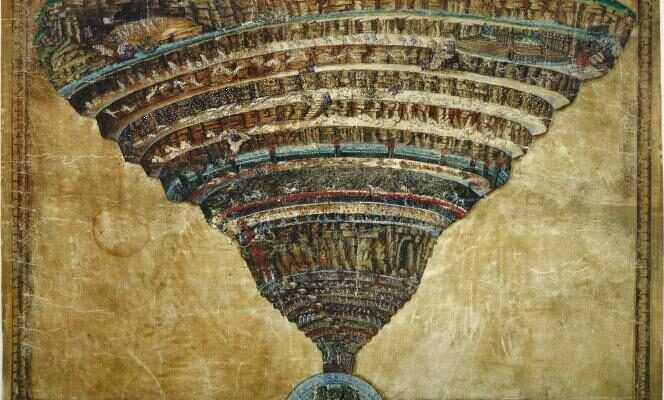LETTER FROM ROME
” NOTel mezzo del cammin di nostra vita / mi ritrovai per una selva oscura / che la diritta via era smarrita “ (“In the middle of the way of our life / I found myself in a dark forest / For the straight road was lost”). These few lines will certainly mean nothing to a French reader. On the other hand, anyone who has done part of their schooling on the other side of the Alps will instantly recognize the first words of the Divine Comedy, by Dante Alighieri, which continue to be a must in Italian schools. And many will be able, even decades later, to recite several passages by heart.
Also the celebration of the 700e anniversary of Dante’s disappearance took on the appearance of a national commemoration throughout the year in Italy. Born in Florence in 1265 and died in Ravenna in 1321, after nearly twenty years of exile, the poet considered the “father” of the Italian language spent little time in Rome during his life. Yet this is where the high point of this year’s festivities took place, with a masterful exhibition devoted to the images of Hell, whose author of the Divine Comedy is the pivot as well as the central figure.
A year after the retrospective dedicated to the painter Raphaël for the 500 years of his disappearance, it was therefore up to another Italian national monument to have the honors of the Quirinal Stables – the exhibition is visible until January 9, 2022. But , this time, the homage is paid in an indirect way, and what is given to admire is the deep trace that the Divine Comedy has left in the collective imagination, through 235 works from 87 museums, public institutions or private collections.
Designed and built by a Franco-Italian couple (art historian and academician Jean Clair and neurologist and science historian Laura Bossi), the “Inferno” exhibition does not stop at the evocation of work of Florentine genius. It resituates it in time to restore its innovative strength, then explores its posterity while inscribing it as a decisive milestone in the history of mentalities.
In the Judeo-Christian tradition, it all begins with fallen angels, banished from the heavens and thrown into the depths for wanting to equal God. And it is the vision of this original fall that marks the entry into the exhibition, through two strikingly lively works, a painting by Andrea Commodi (1560-1638), and an 18th century marble.e century now attributed to Francesco Bertos. In front of them, a monumental plaster model from the 1880s of The Gates of Hell, by Auguste Rodin (more than 6 meters high), marks the symbolic start of the course.
You have 53.06% of this article left to read. The rest is for subscribers only.
